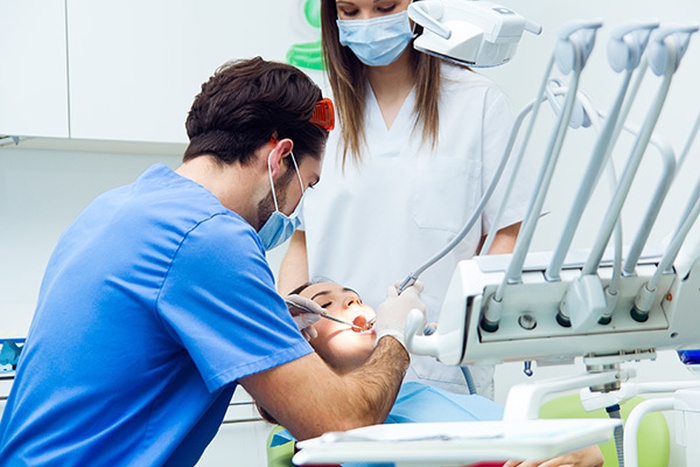
IMPACTED TOOTH
An impacted tooth is a tooth that is stuck under the gum or bone and cannot come out, even though the time to come out has passed. Such teeth can remain buried inside the jawbone as well as they can be invisible under the soft tissue. Most often, upper and lower third molars remain impacted in the jaws. Impacted teeth are painful and can lead to infection. They can damage the adjacent tooth or root of the tooth by pressing. If the sac surrounding the impacted tooth is filled with fluid and begins to expand to form a cystic structure, more serious problems arise. Treating this condition requires much more serious surgery. Impacted wisdom teeth should be evaluated to be removed when they cause jaw pain, limitation of mouth opening, injury and smell in the cheek. In addition, it is recommended to extract the impacted teeth found in the radiological examination when there is damage to the jawbone and surrounding teeth.
When should impacted teeth be extracted?
Impacted wisdom teeth should be evaluated to be removed when they cause jaw pain, limitation of mouth opening, injury and smell in the cheek. In addition, it is recommended to extract the impacted teeth found in the radiological examination when there is damage to the jawbone and surrounding teeth.
What are the symptoms of impacted teeth?
- Severe toothaches
- Redness and swelling in the gums
- Bleeding in the gums
- Bad breath
- Swelling around the jaw
Why should impacted teeth be treated?
The treatment of impacted teeth, which is a serious threat to oral and dental health, provides advantages in many ways. Although the treatment of impacted teeth is sometimes ignored, the following issues demonstrate the importance of impacted teeth treatment:
- Tooth losses caused by impacted teeth are prevented.
- Tooth decays are prevented
- Prevents cysts and tumors in the mouth
- Helps maintain a healthy tooth alignment
- Eliminates bad breath problems and ensures cleaner teeth.
What are the issues to be considered after impacted tooth extraction?
After the operation, food should be eaten with the other side within the first 24 hours. If smoking is involved, a break should be made for at least 24 hours. The tampon placed in the area of the operated tooth is removed within approximately 30 minutes. Unless otherwise instructed by the doctor, the tampon should not be replaced with anything. As a result of the impacted tooth operation, the stitches in the mouth are usually removed at the end of the 7th day. At the end of this process, the doctor can be contacted to remove the stitches. Although the swelling is normal after the operation, cold compresses can be applied to the part where the impacted tooth is extracted for the first day.
Which teeth remain impacted?
Wisdom teeth, canines and premolars may also remain impacted. When it is determined that they cannot be brought to their places orthodontically (with wires), they should be pulled by oral (maxillofacial) surgeons with the same operation.
Which department does the impacted tooth extraction?
Oral, dental and maxillofacial surgeons, who are among the dentistry departments, perform the impacted tooth extraction process.
Is impacted tooth extraction a painful procedure?
Tooth extraction is performed under anesthesia, and you will not feel pain during this time, but you may have a little pain after the treatment. The pain that occurs is at a level that can be controlled with painkillers.
© COPYRIGHT 2025 ALL RIGHTS RESERVED
Privacy Policy